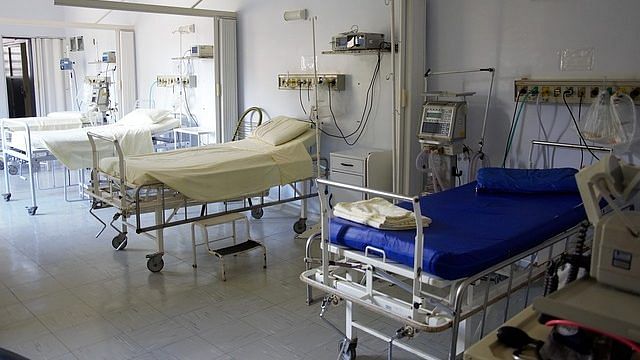New Delhi: The central government will now provide a one-time payment of Rs 15 lakh to economically backward patients suffering from rare diseases, which affect an estimated 70 million people in India.
The decision comes as the government works on a fresh policy for the treatment of rare diseases after an earlier version was withdrawn last year over multiple goof-ups.
“The government being alive to the needs of patients, pending reframing of the policy, the ministry has added a new component for treatment of rare diseases under the umbrella scheme of Rashtriya Arogya Nidhi for providing one-time financial assistance up to Rs 15 lakh, to patients belonging to families living below threshold poverty line for treatment of identified rare diseases in government hospitals,” Union Health Minister Harsh Vardhan told ThePrint.
However, the inclusion of such patients into the Rashtriya Arogya Nidhi (RAN), an umbrella scheme that seeks to financially aid Below Poverty Line (BPL) patients of life-threatening diseases, is being seen as a possible u-turn on a government promise that was expected to ease the lot of lakhs.
Among other things, the government’s rare-disease policy, which was scrapped last December, aimed to set up a Rs 100 crore corpus with no limits on the number of times or amount of assistance sought. It also considered all patients eligible, not just BPL ones.
An expert committee is currently devising a new policy.
“The expert committee [working on the proposal] is likely to finalise its draft report soon. Thereafter, consultations with state governments and other stakeholders will be held,” he added. “At this stage, it is not possible to comment on the content of the new policy, which is in the making.”
The Rs 100-crore corpus is believed to have proved the key sticking point for the policy as the government could not muster the requisite funds. In the new policy, the ministry is likely to do away with the announced “initial corpus fund of Rs 100 crore”.
Also read: For the first time, India has a genome database. But are we ready to use it?
‘Policy reviewed’
The Modi government had approved the National Policy for the Treatment of Rare Diseases in 2017, on the directions of the Delhi High Court. It was announced by former Union minister J.P. Nadda in February 2018.
The policy was meant to address diseases that affect a very small number of people but are chronic, life-threatening and in many cases result in some kind of hindrance to normal life.
There are around 8,000 rare diseases across the globe, of which 450 have been reported in India. They include haemophilia, thalassemia, sickle-cell anaemia and lysosomal storage disorders such as Pompe disease, cystic fibrosis, Gaucher’s disease, and spinal muscular dystrophies.
India has about 70 million patients of rare diseases.
However, as reported by ThePrint earlier, the government was taken to court by some patients who failed to secure the promised financial assistance. In court, the health ministry admitted last year that it had overlooked certain aspects that were hindering the implementation of the policy.
For one, the ministry had not sought the concurrence of most states before framing the policy, despite health being a state subject. Secondly, the government handed over the responsibility of the policy to the National Health Mission (NHM), tasked with primary and secondary healthcare, without realising that rare diseases fell under tertiary healthcare, requiring specialists in large hospitals.
It had not allocated the initial corpus of Rs 100 crore promised under the policy, despite filing an affidavit in December 2017 claiming that it had. The policy also lacked a definition for rare diseases, for which other countries have arrived at personalised yardsticks.
The government subsequently withdrew the policy on 19 December 2018, saying it will be reviewed “in light of information and updates received for further improvement”.
Also read: How I led the team that carried out India’s first hand transplant
A ‘u-turn’
Given that the conditions covered under the scheme are mostly incurable, life-threatening and exorbitant to treat, experts have criticised what they see as a “u-turn” on the part of the government.
“A one-time payment clearly signals that the government has done away with the Rs 100 crore corpus fund that was the sticking point with previous policy and the primary reason for its failure,” said Malini Aisola, co-convenor of the NGO All India Drug Action Network (AIDAN).
“It appears that the ministry is simply extending what was meant to be a temporary arrangement instead of [making] a good-faith attempt at putting in place a sustainable financing model,” Aisola added.
Limiting the policy to BPL families also defeats its purpose, experts said.
According to Dr Alok Bhattacharya, a Jawaharlal Nehru University (JNU) professor who also runs a charitable trust for the rare disease GNE Myopathy, said India “needs a rare-disease policy that caters to all groups of patients and not a small number”.
GNE Myopathy is a rare genetic condition that causes muscles in the arms and legs to become increasingly weak, hence stopping body movement. Bhattacharya, whose daughter suffers from the disease, expects the new policy to place major emphasis on the development and manufacture of rare-disease drugs in India.
“With acute dependence on the import of these drugs, it is difficult to envisage an equitable policy for the benefit of all rare-disease patients,” he said.
“But until India develops its own cost-effective indigenous infrastructure for the orphan drug development, the government must ensure that available treatment must be extended to all patients.”
Also read: Indians pay 70% less than the global median to buy medicines, study finds






